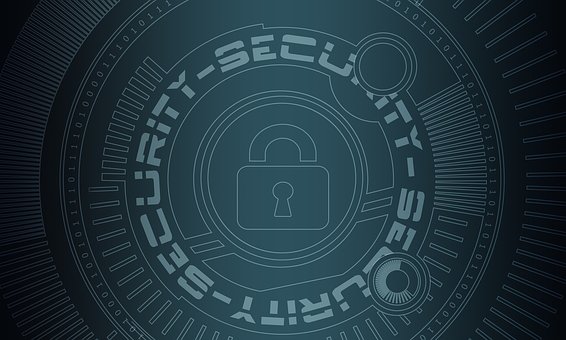
In the rapidly evolving landscape of cybersecurity and networking, the emergence of Secure Access Service Edge (SASE) marks a pivotal moment. As businesses adapt to remote work and cloud technologies, traditional approaches struggle to meet the demands of modern connectivity and security. Enter SASE, a transformative framework that seamlessly integrates networking and security, promising a comprehensive solution to the challenges posed by the dynamic digital environment.
The Evolution of Networking and Security
Over the years, the synergy between networking and security has become increasingly critical. Traditional setups, focused on protecting a localized network perimeter, now face obsolescence. Cloud computing, IoT proliferation, and remote work necessitate a paradigm shift.
Legacy security models struggle to secure data dispersed across diverse devices and environments. The emergence of SASE addresses this shift by converging security and networking, accommodating the dynamic nature of modern business. This evolution reflects the growing recognition that a holistic, adaptable approach is essential to safeguard against emerging threats and enable seamless access in our interconnected digital age.
Understanding SASE: Secure Access Service Edge
SASE is more than a technological concept; it's a response to the evolving needs of a digitally interconnected world. SASE redefines networking and security architecture by integrating them into a cohesive framework. This convergence transcends traditional hardware-centric approaches, replacing them with a cloud-native, software-defined solution.
SASE combines essential components such as software-defined wide area networking (SD-WAN) and security features like firewall-as-a-service and zero trust network access. This innovative blend empowers organizations to provide secure, high-performance access to resources from anywhere while adapting swiftly to changing demands. SASE embodies a strategic departure from siloed strategies, offering a unified path to address modern connectivity and security challenges.
Key Benefits of SASE-Based Offerings
Embracing SASE-based offerings ushers in a host of transformative advantages for organizations navigating today's dynamic digital landscape:
Unified Security and Networking: SASE seamlessly integrates security and networking, eliminating silos and reducing complexity.
Enhanced Protection: The holistic approach safeguards data, applications, and users across distributed environments.
Optimized Performance: Dynamic resource allocation ensures consistent high-speed access, regardless of user location.
Simplified Management: Centralized control streamlines operations, liberating IT resources for strategic initiatives.
Scalability: Cloud-native architecture facilitates effortless scaling, accommodating shifting workloads and business expansion.
Adaptability: SASE's agility aligns with evolving technology trends and emerging security challenges.
Cost Efficiency: Consolidated services and reduced hardware costs result in an optimized budget allocation.
These benefits empower organizations to cultivate secure, agile, and efficient digital ecosystems that foster innovation and competitive edge.
Market Adoption and Trends
The adoption of SASE solutions has gained remarkable momentum across industries. As organizations embrace digital transformation, the need for robust, flexible, and secure networking is paramount. SASE's holistic approach resonates with the demands of hybrid work models and the proliferation of cloud applications.
This convergence of networking and security aligns with modern business strategies, leading to increased interest in SASE offerings. The trend reflects a paradigm shift from conventional models, with companies recognizing the value of an integrated solution that provides seamless access while fortifying defenses. As digital landscapes continue to evolve, SASE's rise is set to persist, reshaping the future of network architecture and cybersecurity.
Challenges and Considerations
Navigating the transition to SASE-based solutions presents organizations with both opportunities and complexities:
Migration Strategy: Migrating from legacy systems to SASE requires careful planning to ensure a seamless transition without disruptions.
Integration Complexity: Coordinating existing security and networking tools with SASE components demands strategic alignment.
Vendor Selection: Choosing the right SASE provider involves evaluating their capabilities, scalability, and compatibility with existing infrastructure.
Security Concerns: Despite its robustness, SASE's cloud-centric nature may raise concerns about data privacy and compliance.
Skill Enhancement: Adapting to SASE requires training IT teams to manage the new architecture effectively.
Customization Needs: Tailoring SASE solutions to fit specific business requirements may entail additional effort.
Balancing these considerations ensures a successful integration that maximizes the benefits of SASE, creating a secure and resilient networking environment for the future.
Looking Ahead: The Future of SASE
The journey of SASE is far from complete. As technology continues to evolve, SASE is poised to play a pivotal role in shaping the future of networking and security. The ever-expanding Internet of Things (IoT) and edge computing landscapes will require SASE's adaptive approach to ensure seamless and secure connectivity.
Anticipated advancements in AI-driven threat detection, context-aware access controls, and real-time analytics will fortify SASE's defenses against emerging risks. SASE's ability to empower hybrid work models will remain crucial as businesses strive to balance flexibility and security. With its inherent agility and integrated architecture, SASE stands poised to lead the charge in fostering a safer, more interconnected digital world.
Stefanie Shank. Having spent her career in various capacities and industries under the “high tech” umbrella, Stefanie is passionate about the trends, challenges, solutions, and stories of existing and emerging technologies. A storyteller at heart, she considers herself one of the lucky ones: someone who gets to make a living doing what she loves. Stefanie is a regular writer at Bora.
 QUICK LINKS
QUICK LINKS